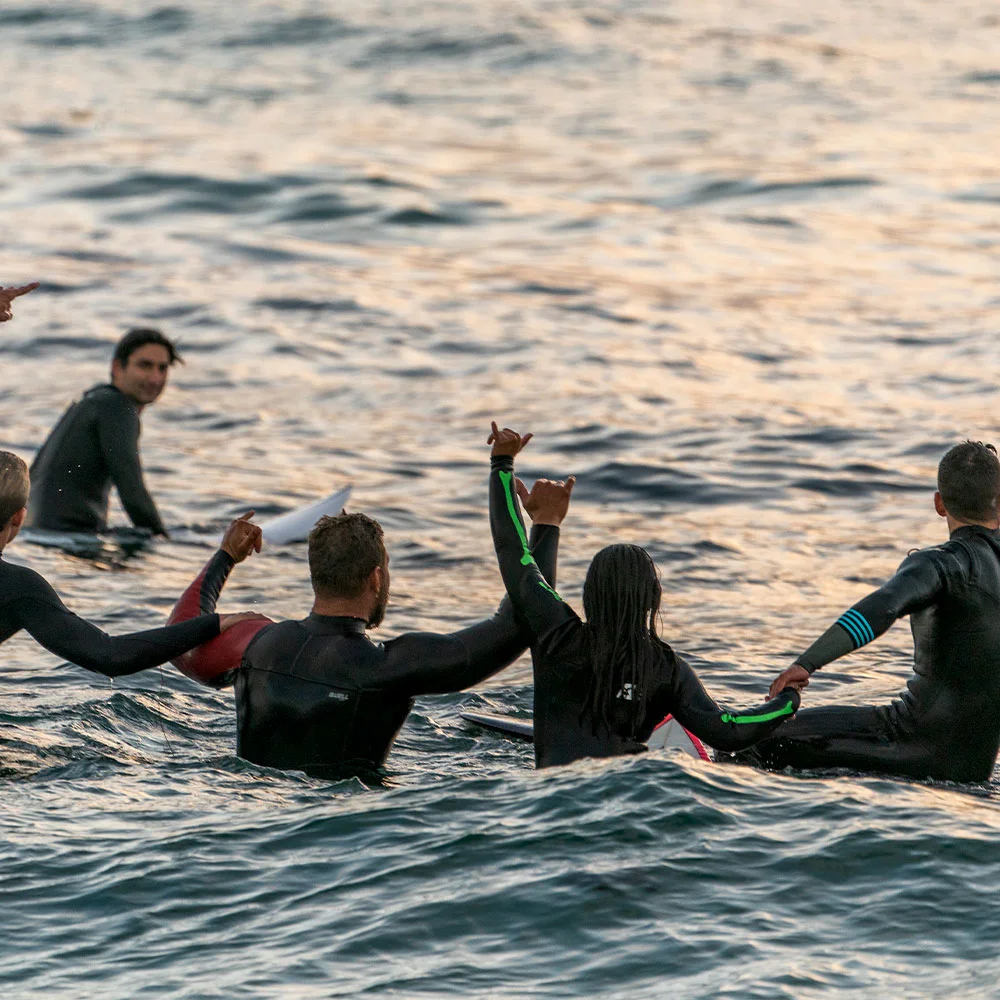Here's what we'll cover
Here's what we'll cover
Here's what we'll cover
How do rumors get started? You hear something from a friend, whisper it to another, and before you know it, everyone thinks that totally false piece of information is fact.
Well, some rumors—like the rumor that bull shark testosterone can boost testosterone (T) levels in humans—can start in surprising ways. In this case, a video game based on fictional characters was the culprit. But that didn’t stop the rumor from gaining traction.
How bull shark testosterone became a thing
It all started with a video game back in 2008, when the massively popular game, Grand Theft Auto IV, was released. In the game, there’s a brief reference to a fitness enthusiast named Brucie Kibbutz taking testosterone extracted from Chilean bull shark testicles.
This became a staple in the game, where if your character takes bull shark testosterone, they briefly go into a “roid rage” with enhanced strength and reflexes. Sales of GTA4 broke three Guinness World Records, so a lot of people started wondering if BST was a real thing they could get their hands on.
With many men curious about how to get bull shark testosterone pills, the market took advantage. Fly-by-night companies rebranded “male enhancement” products with bull shark names and logos to cash in. These were no different than the products they’d sold for years, combinations of horny goat weed and sea cucumber extract and whatever else they could convince people to swallow.
Rumors circulated that bull shark testosterone could add pounds of muscle and cure erectile dysfunction all at once.
Is there any truth to it? You might be surprised to find this out, but it turns out that guy in the locker room selling creatine supplements for a multi-level marketing company wasn’t a good source of scientifically accurate information. Bull shark testosterone is not a real thing.
Bull sharks
Bull sharks may not offer anything good for your workout, but they’re fascinating creatures. They’re among the top three deadliest shark species to humans, along with great white sharks and tiger sharks. They tend to live in coastal waters, but unlike other species, they can survive in freshwater. They’ve been caught in the Mississippi River, as far North as Illinois (Thomerson, 1977). People have found bull sharks in lakes with no apparent connection to the ocean.
We should dispel a few myths about bull sharks (Carcharhinus leucas) right off the bat. First, contrary to Brucie Kibbutz of Grand Theft Auto fame, there are no Chilean bull sharks. At least no one has ever reported one. You’re far more likely to encounter a bull shark off the coast of Charleston than Chile (Simpendorfer, 2009).
Then there’s the matter of testosterone concentration. A healthy adult human male has a testosterone level ranging from 3.5 to 7.5 nanograms per milliliter (Rivas, 2014).
Testosterone isn’t a steady thing, though. Levels fluctuate throughout the day. Smelling an ovulating woman can cause testosterone to spike (Miller, 2009). Another sure-fire method is watching pornography (Hellhammer, 1985). Oddly enough, playing Grand Theft Auto could raise your testosterone levels, too, as long as you’re winning (Oxford, 2010).
How does the mighty bull shark compare? Not as much research has gone into testing bull shark testosterone levels as you’d imagine, but we do have some data. A 1990 study tested two captured male bull sharks (US Dept of Commerce, 1990):
Shark One had merely 2.7 ng/ml testosterone. In a human male, that would have qualified as low.
On the other hand, Shark Two was a virtual testosterone factory with a whopping 358 ng/ml.
Just like humans, there’s a lot of fluctuation.
Both of these sharks may have been outliers, as sharks of other species ranged from 23 to 78.5 ng/mL (U.S. Dept of Commerce, 1990). Someone might consider buying Shark One an Xbox or Playstation, though.
The FDA approves testosterone therapy for patients with low testosterone (often abbreviated as “low T”) due to specific medical conditions. Scientists call this hypogonadism. Healthcare providers may also prescribe testosterone off-label for transgender men (Irwig, 2017).
There are numerous over-the-counter (OTC) products on the market with “testosterone” in their name that don’t contain a single molecule of testosterone. (By definition, if they’re OTC, they can’t contain testosterone, since testosterone is only available with a prescription). Companies make these from non-prescription supplements that they say amplify the body’s production of testosterone. Most of these claims have no scientific basis, however.
Who actually needs testosterone?
One should only take testosterone with a prescription and strictly according to their prescriber’s instructions. Taking testosterone in ways not prescribed can cause serious side effects, including heart attack, stroke, liver disease, seizures, and mania (MedlinePlus, n.d.). Testosterone can even cause male breast growth, a condition known as gynecomastia (Rhoden, 2004).
Testosterone is typically available as a gel, transdermal patch, or injection. Only recently have oral testosterone tablets been approved by the FDA.
If you don’t have low T and feel compelled to increase your testosterone, there are safer ways to do it than hunting sharks. As it turns out, playing video games or watching pornography can be a great alternative!
DISCLAIMER
If you have any medical questions or concerns, please talk to your healthcare provider. The articles on Health Guide are underpinned by peer-reviewed research and information drawn from medical societies and governmental agencies. However, they are not a substitute for professional medical advice, diagnosis, or treatment.
References
Hellhammer, D. H., Hubert, W., & Schürmeyer, T. (1985). Changes in saliva testosterone after psychological stimulation in men. Psychoneuroendocrinology, 10 (1), 77–81. doi: 10.1016/0306-4530(85)90041-1. Retrieved from https://pubmed.ncbi.nlm.nih.gov/4001279/
Irwig, M. S. (2017). Testosterone therapy for transgender men. The Lancet. Diabetes & Endocrinology, 5 (4), 301–311. doi: 10.1016/S2213-8587(16)00036-X. Retrieved from https://pubmed.ncbi.nlm.nih.gov/27084565/
MedlinePlus. (n.d.). Testosterone. Retrieved Feb. 27, 2021 from https://medlineplus.gov/druginfo/meds/a619028.html
Miller, S. L. & Maner, J. K. (2010). Scent of a woman: Men’s testosterone responses to olfactory ovulation cues. Psychological Science, 21 (2), 276–283. doi: 10.1177/0956797609357733. Retrieved from https://pubmed.ncbi.nlm.nih.gov/20424057/
Oxford, J., Ponzi, D., & Geary, D. C. (2010). Hormonal responses differ when playing violent video games against an ingroup and outgroup. Evolution and Human Behavior, 31 (3), 201–209. doi: 10.1016/j.evolhumbehav.2009.07.002. Retrieved from https://www.sciencedirect.com/science/article/abs/pii/S1090513809000671
Rhoden, E. L. & Morgentaler, A. (2004). Treatment of testosterone-induced gynecomastia with the aromatase inhibitor, anastrozole. International Journal of Impotence Research, 16 (1), 95–97. doi: 10.1038/sj.ijir.3901154. Retrieved from https://www.nature.com/articles/3901154
Rivas, A. M., Mulkey, Z., Lado-Abeal, J., & Yarbrough, S. (2014). Diagnosing and managing low serum testosterone. Proceedings (Baylor University. Medical Center), 27 (4), 321–324. doi: 10.1080/08998280.2014.11929145. Retrieved from https://pubmed.ncbi.nlm.nih.gov/25484498/
Simpfendorfer, C. & Burgess, G. H. (2009). Carcharhinus leucas. The IUCN Red List of Threatened Species 2009: e. T39372a10187195 [Data set]. doi: 10.2305/IUCN.UK.2009-2.RLTS.T39372A10187195.en. Retrieved from https://www.iucnredlist.org/species/39372/10187195
Thomerson, J. E., Thorson, T. B., & Hempel, R. L. (1977). The bull shark, carcharhinus leucas, from the upper mississippi river near alton, illinois. Copeia, 1977 (1), 166–168. doi: 10.2307/1443522. Retrieved from https://www.jstor.org/stable/1443522
U.S. Department of Commerce. (1990). Elasmobranchs as Living Resources: Advances in the Biology, Ecology, Systematics, and the Status of the Fisheries. NOAA Technical Report NMFS 90, 143-155. Retrieved from https://spo.nmfs.noaa.gov/content/tr-90-elasmobranchs-living-resources-advances-biology-ecology-systematics-and-status
Worm, B., Davis, B., Kettemer, L., Ward-Paige, C. A., Chapman, D., Heithaus, M. R., et al. (2013). Global catches, exploitation rates, and rebuilding options for sharks. Marine Policy, 40, 194–204. doi: 10.1016/j.marpol.2012.12.034. Retrieved from https://www.sciencedirect.com/science/article/abs/pii/S0308597X13000055












